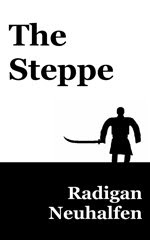
"FIGHTERS ALL
"'All shrikes are bullies, aggressive and blood-thirsty', says a distinguished naturalist, and the habits of the African helmet or wood shrike would seem to confirm this statement. But like other creatures, including man, it must eat to live, and fight for its living. We hear of shrikes seizing helpless young birds and pecking out their brains to provide a tasty morsel, whilst ignoring the rest of the body.... In many districts shrikes band together in companies to protect their nesting grounds. Fortified by numbers they become exceedingly daring, and will even mob and 'dive buzz' an invader as large and formidable as a leopard."
--Animal World in Color, Volume 8 - Hunters: Birds, Fish, and Amphibians, edited by Maurice Burton, Childrens Press: Chicago, 1969
"'All shrikes are bullies, aggressive and blood-thirsty', says a distinguished naturalist, and the habits of the African helmet or wood shrike would seem to confirm this statement. But like other creatures, including man, it must eat to live, and fight for its living. We hear of shrikes seizing helpless young birds and pecking out their brains to provide a tasty morsel, whilst ignoring the rest of the body.... In many districts shrikes band together in companies to protect their nesting grounds. Fortified by numbers they become exceedingly daring, and will even mob and 'dive buzz' an invader as large and formidable as a leopard."
--Animal World in Color, Volume 8 - Hunters: Birds, Fish, and Amphibians, edited by Maurice Burton, Childrens Press: Chicago, 1969










